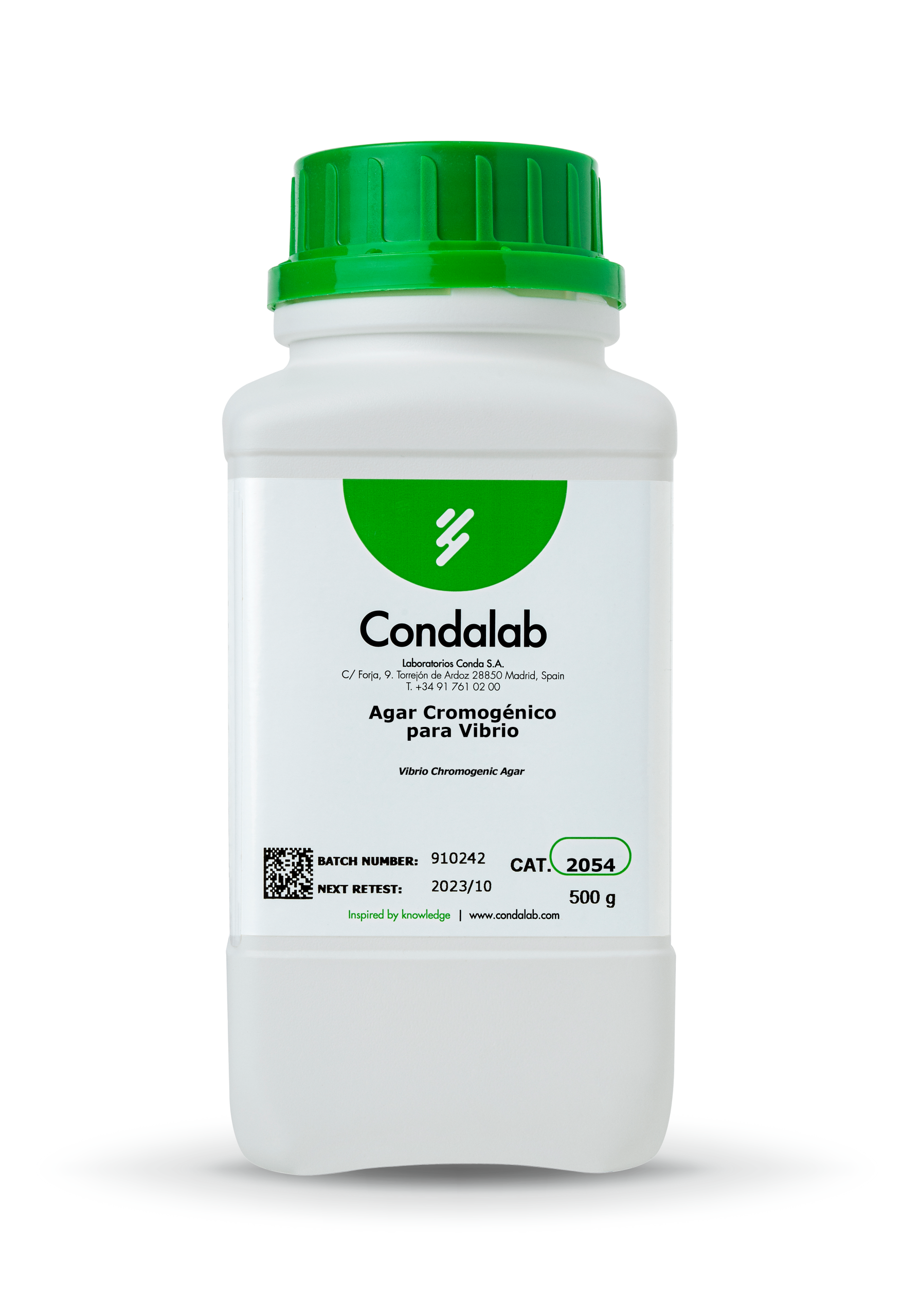Easy and quick detection of Vibrio sp with our chromogenic medium
Our range of chromogenic media is designed to improve the accuracy and speed of results. CondaChrome® culture media have in their composition a colorless chromogenic substrate, which thanks to the specific enzymatic activity of each microorganism, is degraded releasing a part of it, called chromophore, giving the colony an intense and specific color that makes it possible to identify the bacteria at first sight.
This results in faster, easier-to-interpret results, saving time in the laboratory and detecting bacteria even when they are present in very low concentrations.
We have a wide range of chromogenic media available, but we would like to highlight the Vibrio Chromogenic Agar.
Medium recommended for the isolation and selective differentiation of Vibrio species based on colony colors due to beta-glucosidase and beta-galactosidase enzymatic activities.
The genus Vibrio consists of micro-organisms whose natural habitat is marine and riverine ecosystems. They are often isolated from seawater, especially in the warmer months and when the water temperature exceeds 17 °C. Vibrio species are mainly responsible for causing cholera and food poisoning in humans.
But how does it work? Chromogenic substrates are used to detect Vibrio species through a change in color of the colonies. This medium is designed for the growth and differentiation of 3 types of Vibrio species depending on the enzyme of each strain:
- Beta-glucosidase activity will result in blue-green colonies, as in the case of V. parahaemolyticus.
- Beta-galactosidase activity will result in red or pink colonies, as in the case of V. cholerae.
- And finally, yellowish-white colonies will be the result of V. alginolyticus, which contains beta-galactosidase, but it is not expressed due to the high concentration of sugars. The alkaline pH of the medium improves the recovery of V. cholerae.
ISO 21872: Microbiology of the food chain – Horizontal method for the determination of Vibrio spp.
Detection of potentially enteropathogenic Vibrio parahaemolyticus, Vibrio cholerae and Vibrio vulnificus (ISO 21872-1:2017), recommends an alternative selective medium to TCBS for the detection of enteropathogenic Vibrio species.



